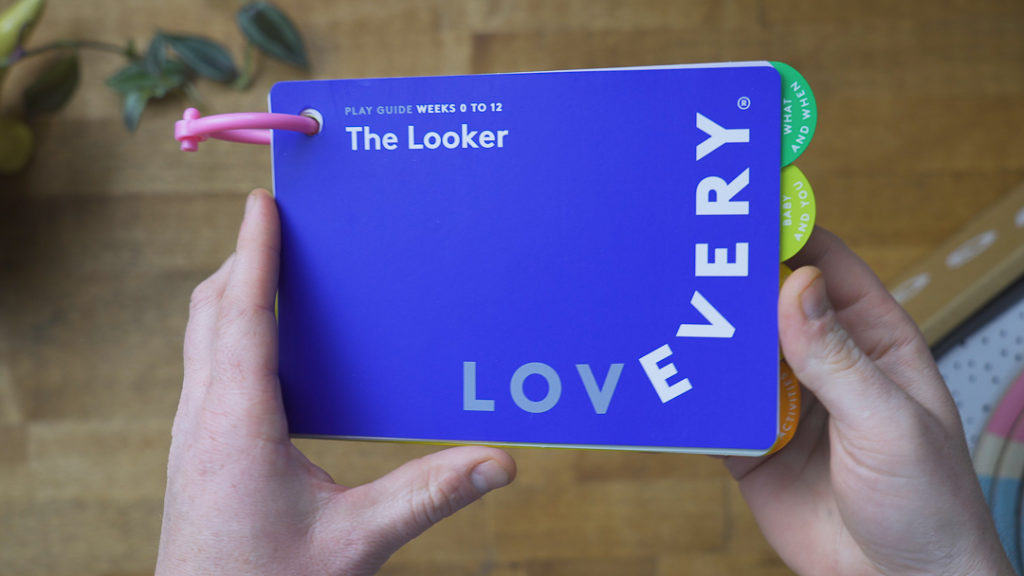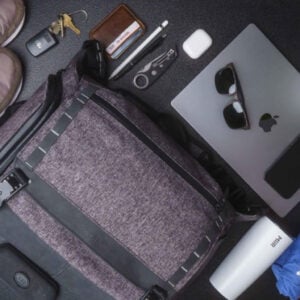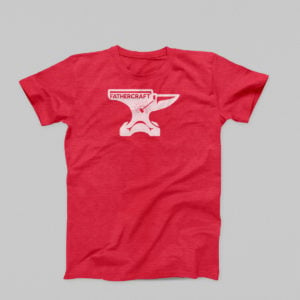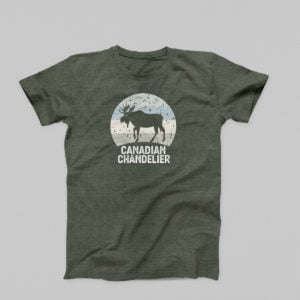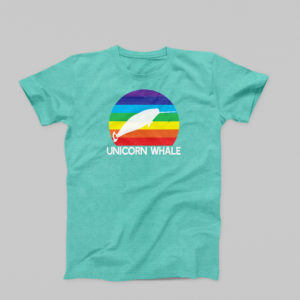If you’re here, you’re probably asking yourself something like this: Does my small child truly need a subscription for toys?
Because the Lovevery Play Kits are exactly that—a box that comes to your house every 2-3 months full of age-appropriate toys for your little one. We had the same question, so we tested the kits twice over the span of a few years. In this Lovevery review, we go over our experience with an infant box (“The Looker”) and a toddler box (“The Analyst”). We’ll also help you understand what your options are for purchasing boxes (if you decide this is for you), while we give you a bit of info about what makes Lovevery awesome and, well… not awesome.
Read the whole review for the full experience (dad jokes included), or skip to what you need:
- What’s in the box?
- The Lovevery Analyst Kit (for toddlers)
- The Lovevery Looker Kit (for babies)
- Subscription and pricing
- The awesome and the wish-it-were-different
- FAQs
Please note: Fathercraft is reader supported, meaning if you click a link and make a purchase, we may earn a commission at no cost to you. Read more about our disclosures and how we approach these reviews in our policies.
What’s in the box? The magic behind Lovevery Play Kits
Let’s start with some basics. This is a subscription box for babies and toddlers, starting with newborns and going up all the way up through 60 months (aka 4 years old… we’re not being annoying, we’re just following their lead. They break it down by month because they offer multiple boxes within each year).
Lovevery prides itself in making toys that “make parents feel confident.” Those toys are based on developmental research, designed to not just keep your little one’s attention but also help them learn. It’s a bold promise. Let’s see if they deliver on it.
The specs of the toys you’ll get certainly make you think so:
- Every piece of wood in the box is sustainably sourced from FSC-compliant sources.
- All fabrics are soft and natural organic cotton, no added ingredients.
- All products in the kits meet or exceed global safety standards for their age.
- All kits are shippped carbon-neutral, so you can feel good about the planet while your little one plays.
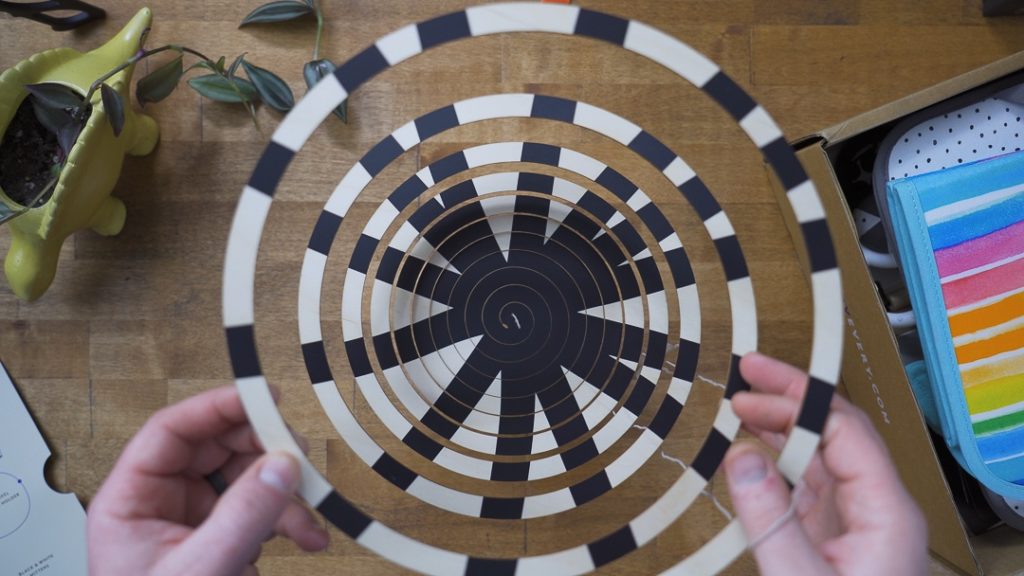
Meanwhile, the company’s research advisors make you feel confident they might just know what they’re doing.
Choosing the right one is nice and simple. Enter your little one’s birthday directly on the site, and you’ll get presented with a personalized plan for the boxes you receive based on their age.
Taking a look at the toddler play kits
Our most recent Lovevery review featured one of the toddler boxes, so we’ll start there. You can watch our overview of “The Analyst” box below:
The Analyst is a play kit designed for toddlers aged 46-48 months (an older three-year-old). Kits for three-year-olds arrive every three months at $120 per kit, containing more in-depth, STEM-focused activities. This one contained:
- A Montessori sensory box
- Color theory puzzle
- Sewing kit
- Pattern match parts and boat set
- Visual recipe cards and measuring cups
- Storybook introducing fractions
If this all sounds a bit too intense, it’s worth noting the guidebook heavily emphasizes these toys are meant to simply introduce concepts to kids. And, kids are welcome to play with the toys however they want (if you watched the video, you saw a shot of Calvin playing with the box itself).
Overall, the toys were engaging and I felt like my kid was learning something (I learned something too, with the recipe cards: patience). We’ll get into the details of what we loved and didn’t love a bit later. For now, here are the the other toddler boxes you can get:
- The Babbler Play Kit, for months 13 through 15
- The Adventurer Play Kit, for months 16 through 18
- The Realist Play Kit, for months 19 through 21
- The Companion Play Kit, for months 22 through 24
- The Helper Play Kit, for months 25 through 27
- The Enthusiast Play Kit, for months 28 through 30
- The Investigator Play Kit, for months 31 through 33
- The Free Spirit Play Kit, for months 34 through 36
- The Observer Play Kit, for months 37 through 39
- The Storyteller Play Kit, for months 40 through 42
- The Problem Solver Play Kit, for months 43 through 45
- The Analyst Play Kit, for months 46 through 48 (the one we tried here!)
- The Connector Play Kit, for months 49 through 51
- The Examiner Play Kit, for months 52 through 54
- The Persister Play Kit, for months 55-57
- The Planner Play Kit, for months 58 through 60
That’s a long list. If your eyes glazed over, here’s the main point: Lovevery has something developmentally appropriate for your toddler from the time they turn 1 until they turn 5 years old.
But what about the infants? Glad you asked.
A closer look at the baby play kits
We also reviewed “The Looker,” a Lovevery baby kit. You can watch the “unboxing” below, but a fair warning first: We tested this kit when I had a child young enough to play with it, which situated us in the heart of the pandemic. And, well… you can tell. A quick overview of the baby box is written below as well if you’re trying to avoid being reminded of that time in your life.
This kit contained toys designed to catch a very tiny human’s even tinier attention span, like:
- A reversible, wooden mobile with black and white on one side and colors on the other
- Black and white card sets (8 cards total) with a card holder
- A silicone rattle with a removable ball
- A book of lullaby lyrics
- Scratch mittens with black and white patterns
- A booklet with information about how to introduce the items to your baby
At the time of reviewing, the box also contained a coffee mug for the parents, which was a nice touch.
The Looker Kit is one of six possible kits in this “Baby Play Kits” group:
- The Looker Play Kit, for 0 to 12 weeks.
- The Charmer Play Kit, for months 3 and 4.
- The Senser Play Kit, for months 5 and 6.
- The Inspector Play Kit, for months 7 and 8.
- The Explorer Play Kit, for months 9 and 10.
- The Thinker Play Kit, for months 11 and 12.
And just like that, your baby is a year old. Happy birthday!
As you can probably tell by these names, every kit has a specific theme that’s designed to match your baby’s developmental skills at that age. For instance, everything in the Looker is black and white (the contrast is good for tiny ones). By the time they get to the Thinker, they’re ready to start developing some imagination and fine motor skills.
What you need to know about Lovevery’s subscription pricing
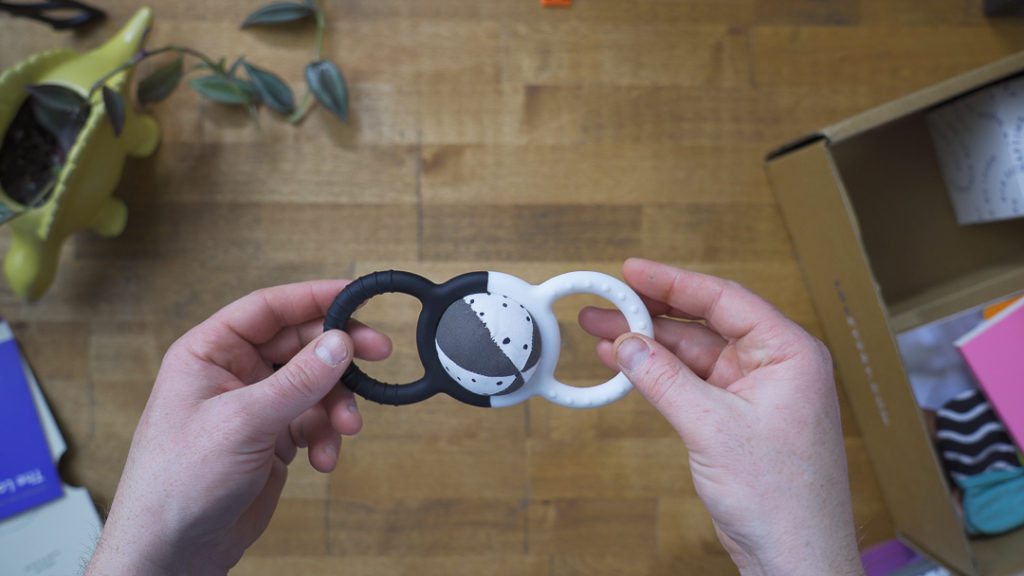
In these boxes, you keep what you get. No loaning or shipping toys back when the next box comes. You also get a 100% money back guarantee, which is helpful if your baby or toddler just doesn’t want to touch the toys.
That’s helpful, because buckle up: This subscription adventure can get a little expensive.
Depending on the age of your child, your Lovevery kits can cost anything between $80 and $120 per kit. You can save a little bit of money by paying ahead for three or four kits at a time (for example, if you pay for four toddler kits up front, your total is $432, saving you $48).
The silver lining here is that through the process, Lovevery is completely transparent. Once you enter your little one’s age, you get to a page that outlines exactly what boxes you will receive and when, with a price for each. You can cancel at any time, so even if you’re about to get six boxes over the course of a year, you can decide you’re done after three of them.
Still, it’s a little confusing. And it’s definitely expensive. Is that investment worth it? Well, why don’t you just ask to skip ahead to the next section, where we dig into our official review of the Lovevery toy kits.
Our Lovevery review verdict: the awesome and the wish-it-were-different
The awesome
- It’s a natural draw. Maybe the most important question: Did my kid like the box? Calvin was drawn to it as a baby, and he enjoyed it again at three. This boosted my confidence that the boxes are developmentally appropriate and engaging. Win-win for all parties involved.
- It’s got the quality. No cheap plastic or worries that anything will fall apart. Every part of the toys you get feels sturdy and ready for those little hands. (And teeth. And feet. Don’t ask.)
- It’s a learning experience. Every box you get has a theme, but it doesn’t end there. The toys inside are built for your kid to learn and develop, not just clutter up their room or the living room.
- It’s repeat enjoyment. Each of the toddler boxes includes different paths of getting to the same end goal. Plus, your little rascal can figure out how the toys make sense together, not just on their own. Pretty neat.
- It has a road map. Yes, literally a map that walks you through how to use every single toy in the box. Given the number of toys per play kit, that helps quite a bit in guiding parents through the learning experience.
- It takes the thinking out of toys. No worries about whether that thing you’re buying is actually age-appropriate. No research needed to see if it’s good for them. You go in knowing that the box you receive is well-suited for that little prince or princess.
- It has a guarantee. You can get your money back if you or your little one don’t like it. Just make sure you don’t lose any of the little pieces before you return it.

The wish it were different
- It’s a little overwhelming. When you first open a kit, there’s a lot to take in. I was trying to take my time, but Calvin just wanted to dive in. That was not only confusing, but it also resulted in a bit of a mess of fluffy balls. Long story.
- It’s still a bunch of new toys. If you’re already worried about the clutter, this adds a steady stream of new toys coming into your home. Yes, they’re beneficial, probably more so than that gift from the third cousin. But they still need their space, when many babies just don’t need a ton of toys.
- It’s expensive. If you can afford it, the benefits are great. But you’re already spend bunches on diapers, baby food, and more. This adds a cool $40 per month to that potentially tight household budget.
- You don’t unbox in order. Maybe that’s a little nit-picky. But as you might have noticed in the above videos, our unboxing resulted in a bit of confusion because the roadmap didn’t match the toys we were getting out at first. That can get confusing.
- Long-term enjoyment. After the initial unboxing, I had to intentionally take the Analyst kit out and prompt my three-year-old to play with it. And with a new box every few months, you’re not necessarily expecting years of committed play.
The verdict
Gotta be honest: It’s mostly a good one. For us, the positives definitely outweigh the negatives, and you can’t help but feel good when you see your little one playing or developing right in front of your eyes. They grow up so fast.
Beyond the sentimental value, these play kits actually serve a very important function. They give you age-appropriate, simple, learning-based toys that are not easy to find. And they do so without requiring lots of research or worry that you’re choosing the right thing.
By the end of each kit, you’ll be surprised how well the toys educate not just your baby, but you as well. You have to weigh the cost, but it gets a thumbs up from us.
Where to buy Lovevery
Lovevery only sells its products directly on its website, but that’s probably the best place to buy them anyway as when you buy there you’ll enjoy the best pricing, free shipping on orders over $75, and everything you buy is backed by the company’s guarantee.
Just the FAQs about Lovevery Play Kits
So we’ve seen some questions about these play kits online. Let’s answer them. Just the FAQs, baby.
Is Lovevery a Montessori product?
Short answer? Yes. Lovevery advertises itself clearly as a maker of Montessori-based toys. The development team includes at least one explicit Montessori expert, along with a psychologist, occupational therapist, and more. The toys you’ll get in the box match up directly with the Montessori principles of active participation, developmental focus, and limited choices.
- Curious about other Montessori products? Check out our Stokke high chair review.
Are Montessori toys better than ‘regular’ options?
That’s just, like, your opinion, man. Better is in the eye of the beholder, but there are some definite advantages to Montessori toys that are worth highlighting:
- They make your child an active participant, requiring their exploration and their own decisions. Active learning tends to work well in the developmental process.
- They offer limited choices. That might sound counterintuitive, but the Montessori philosophy suggests that it’s a good thing. Too many choices means getting overwhelmed, and results in being unable to focus. Calvin’s surprisingly long attention span with one of these boxes is a perfect example of that philosophy in action.
Where are Lovevery toys made?
Look hard enough, and you may find the Made in China label. The company will tell you that the products are designed in Idaho and California, but the manufacturing still happens overseas. That said, Lovevery does say that the manufacturing facility focuses n sustainably-harvested wood toys, sharing the company’s core values. All products are inspected by Lovevery in the U.S. before they find their way into mailboxes.
Can you buy Lovevery toys separately?
Yes and no. You cannot buy the toys available in a play kit separately, because they’re designed to make sense together and for a specific age group. It’s one of those “whole greater than the sum of its parts” things.
That said, Lovevery sells other products on its website that aren’t a part of the play kits. You can find a block set, a play gym, and a few other items like a tunnel (hint, kids looooove tunnels as soon as they can crawl through at about 8 months) and a “pull pup” that follow the same general concept as the boxes. Not a big selection, but worth a browse.
They also offer four different course packs:
- The potty learning course pack
- The new sibling course pack
- The food before 1 course pack
- The tummy time course pack
(Psst… we also know someone else who offers parenting courses! It’s totally not us… okay, it’s us).
Wrapping up & what’s next
Thanks for checking out our review!
And, if you made it this far, chances are you’ll like some of our other stuff. Learn more about Fathercraft here, or check out our recommendations for essential gear for babies here.
